8 Tips for Maximizing the Value of Your Equipment Financing Investment
It takes continual innovation and optimization to stay ahead of the curve in the fast-paced business environment of today.
Equipment funding is a useful tool for purchasing necessary machinery and technology without making a sizable upfront financial commitment.
Making well-informed decisions and implementing a strategic plan are essential to fully realizing the return on investment.
This in-depth guide explores eight crucial suggestions to help you get the most out of your Equipment Financing investment.
1: Examine Your Equipment Needs Carefully
Before you get started with equipment finance, carefully examine your company’s equipment needs. Consider your industry’s requirements, manufacturing capacity, and growth expectations when determining the type and quantity of equipment you need.
Take a detailed inventory of your current assets and identify any gaps or opportunities for improvement. Understanding your equipment requirements upfront allows you to make informed decisions when it comes to choosing the best financing option and equipment vendor.
2: Select the appropriate financing option
Equipment finance is available in a variety of ways, including loans, leases, and lines of credit. Each option has its own set of pros and cons, so it is critical to select the best financing option for your circumstances. Equipment loans, for example, provide upfront funding for purchasing equipment outright, whereas equipment leases allow flexibility and reduced monthly payments.
When reviewing financing choices, keep interest rates, payback terms, and tax consequences in mind to ensure that you select the one that best fits your business goals.
3. Negotiate favorable terms
When it comes to equipment finance, don’t be hesitant to negotiate favorable terms. Negotiating with a bank, leasing business, or equipment vendor can help you get better interest rates, repayment terms, and other concessions.
Prepare to shop around and compare offers from several lenders to ensure that you are getting the best bargain possible. Furthermore, consider using your company’s creditworthiness and financial stability to negotiate better terms and conditions.
4: Take Advantage of Tax Benefits
One of the primary benefits of equipment financing is the possibility of tax breaks. In many circumstances, equipment financing allows firms to deduct the whole cost of equipment acquisitions from their taxable income using depreciation or Section 179 deductions.
Take advantage of these tax breaks to lower your overall tax burden and increase the value of your equipment financing investment. To make sure you are taking full advantage of your tax savings while adhering to the regulations, speak with an accountant or tax expert.
5: Make a Substantial Equipment Investment
The equipment’s dependability and quality are what will ultimately determine how much you will get back from your equipment financing investment. High-quality equipment may be more expensive up front, but it can save money over time by requiring fewer repairs, maintenance, and premature replacements.
Selecting equipment suppliers and manufacturers with a solid track record of dependability, durability, and after-sales support will help you make informed decisions. Conduct extensive research, read reviews, and seek advice from industry experts to ensure that you’re buying equipment that will provide value for years to come.
6: Plan for Maintenance and Upkeep
Proper maintenance is vital for extending the life and improving the performance of your equipment. Neglecting maintenance can result in expensive repairs, downtime, and lower production, reducing the value of your equipment financing investment.
Create a complete maintenance schedule that includes regular inspections, preventative maintenance tasks, and timely repairs as needed. When choosing an equipment vendor, consider warranty coverage, spare parts availability, and service agreements to ensure that you get the assistance you need to keep your equipment functioning properly.
7: Coach Your Staff
Investing in equipment is only half the battle; ensuring that your crew understands how to use it successfully is also critical. Provide your personnel with comprehensive training and continuing support to ensure that they can efficiently operate, maintain, and troubleshoot the equipment.
It is advisable to arrange for training sessions with equipment manufacturers or outside specialists to instruct your staff on the features, functionalities, and safety protocols of the equipment. Employees who have been properly trained are more productive, safer, and more prepared to maximize the value of their equipment finance investment.
8: Track Performance and ROI
Make sure your equipment financing investment is bringing the desired value to your business by keeping an eye on its performance and return on investment (ROI). Keep an eye on key performance indicators like uptime, productivity, maintenance costs, and revenue generated to gauge the equipment’s overall effectiveness.
Examine your financing terms and equipment usage regularly to find areas where you can cut costs or make improvements. By being vigilant and proactive, you can ensure that your equipment finance investment continues to add value and advances your company’s objectives over time.
Closing Remarks
When a business wants to buy the equipment it needs to succeed, equipment financing can be a helpful tool. Following these eight recommendations for optimizing the value of your equipment finance investment will allow you to make sound decisions that will benefit your business in the long run.
You can take a lot of steps to make sure your equipment financing investment is profitable. It entails assessing your equipment requirements, deciding on the best financing option, making quality equipment purchases, and training your staff.



Sorry, the comment form is closed at this time.